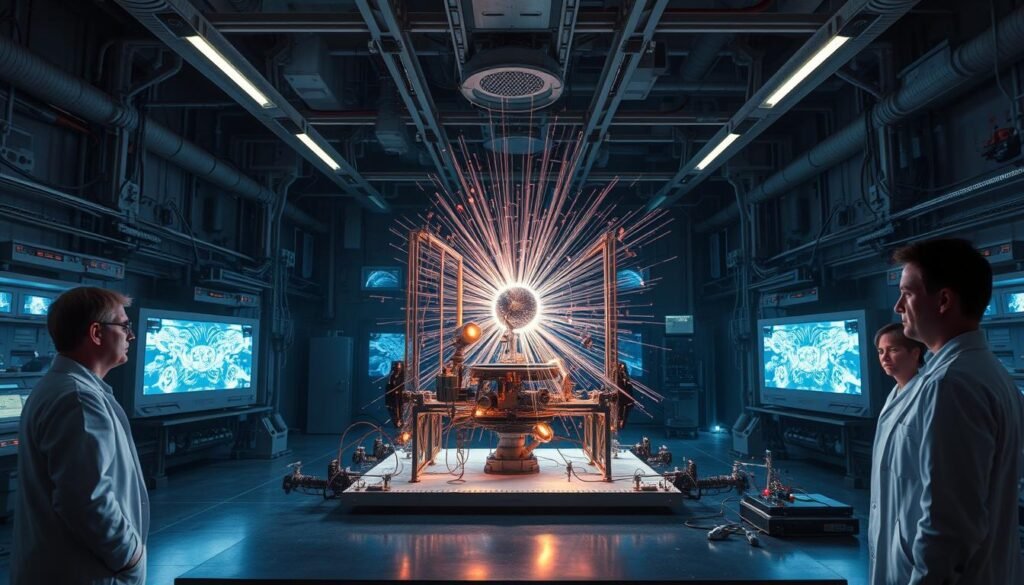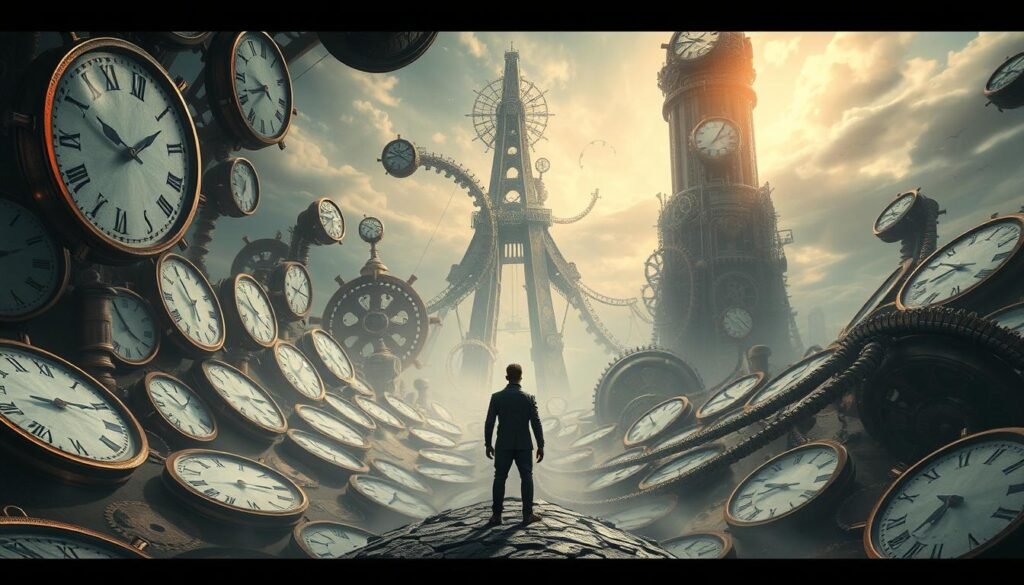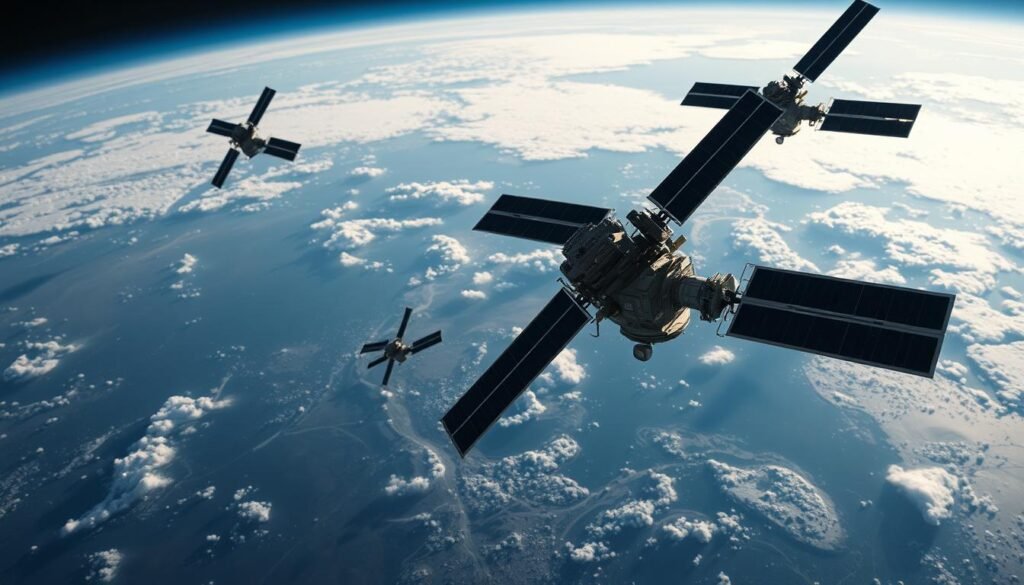Movies and television often show time travel as a sudden leap between centuries. A character steps into a machine and instantly arrives in a different era. This popular idea is exciting, but it misses the real science behind the concept.
The truth is, we are all traveling through time right now. We move forward at a steady pace of one second per second. Scientific principles, however, suggest this rate is not fixed. Under certain extreme conditions, this rate of travel can change.
According to physicists, a journey to the future is not only possible but has been proven. Traveling to the past, however, presents immense challenges. Understanding these possibilities requires exploring the fundamental nature of our world.
Breaking Down Time and Space: The Basics of Relativity
Albert Einstein’s revolutionary insights in the early 20th century fundamentally reshaped our comprehension of the cosmos. His theory of relativity revealed that our everyday experience of reality is incomplete. The universe operates according to principles that challenge conventional intuition.
Einstein’s Special and General Theories
The special theory of relativity established that motion through space directly influences the passage of time. Objects moving at high velocities experience seconds differently than stationary observers. This connection between velocity and temporal flow forms a cornerstone of modern physics.
Albert Einstein later developed his general theory of relativity, which introduced a radical concept. Space and time are not separate entities but woven together into a single fabric called space time. This fabric can stretch and bend under certain conditions.

The Link between Gravity, Mass, and Time
General relativity demonstrates that massive objects create gravitational fields by warping space time. The greater the mass, the more significant the curvature. This bending effect directly influences how time progresses in different locations.
As cosmologist Dave Goldberg explains,
“Near massive bodies—near the surface of neutron stars or even at the surface of the Earth, although it’s a tiny effect—time runs slower than it does far away.”
This relationship between gravity, mass, and temporal variation has been confirmed through rigorous experimentation. Every physicist studying cosmology recognizes these principles as established scientific fact.
Understanding the Phenomenon: Time Dilation in Action
Real-world evidence supports the idea that temporal progression is not constant throughout the universe. This phenomenon, called time dilation, creates measurable differences that scientists have documented through careful experimentation.

The Twin Paradox and Real-World Experiments
The famous twin paradox provides a clear thought experiment about temporal variation. If one twin journeys through space at high velocity while the other remains on Earth, the traveling twin experiences seconds at a slower rate. Physicist Vlatko Vedral explains, “If you travel and come back, you are really younger than the twin brother.”
Astronauts Scott and Mark Kelly demonstrated this effect in a real-life study. Scott spent extended periods aboard the International Space Station. Upon return, biological markers showed he had aged slightly less than his Earth-bound brother.
Everyday Examples with Airplane and Satellite Clocks
Scientists conducted a famous experiment using precise atomic clocks. They synchronized two identical timepieces and flew one around the world in an airplane. The clock on the fast-moving aircraft lost a tiny fraction of a second compared to the stationary one.
Satellites orbiting Earth provide another compelling example. These spacecraft move at approximately 8,700 miles per hour while experiencing weaker gravity. Their internal clocks must be regularly adjusted to account for these combined effects.
A Step-by-Step Guide on How Time Travel Could Work
Moving beyond thought experiments, the principles of relativity provide a concrete pathway for temporal displacement. Two main methods, based on established physics, offer a potential route to the future.
The Roles of Speed and Gravitational Forces
The first method involves immense velocity. As an object’s speed increases toward the speed light, its experience of seconds slows relative to a stationary observer. This effect becomes significant only at a substantial fraction of light‘s velocity.
The second pathway uses intense gravity. Massive objects warp spacetime, slowing the passage of time in their vicinity. Astrophysicist Emma Osborne clarifies this subtle effect: “Your head is ageing quicker than your feet, because Earth’s gravity is stronger at your feet.”
“That is a real effect. That is completely uncontroversial.”
The Transition from Theoretical Concepts to Practical Possibilities
These principles make forward travel possible. An individual near a black hole‘s edge, where gravity is prodigious, might experience hours while centuries pass on Earth. Returning home would be a journey into the distant future.
While the science is sound, the practical hurdles are monumental. Achieving near-light speed or surviving near a black hole requires technology far beyond our current capabilities. This gap between theory and practice defines the current state of this fascinating field.
Exploring Time Machines and Wormholes
Theoretical physics offers several fascinating models for devices that might enable journeys to the past. These concepts move beyond simple forward displacement, tackling the far greater challenge of moving back in time.
Scientists explore these ideas through the mathematics of general relativity. The equations allow for structures known as closed timelike curves. These are paths through the fabric of the cosmos that loop back on themselves.

The Concept of a Time Machine and Its Challenges
Building a functional time machine is not just an engineering problem. It is a fundamental physics challenge. Most proposed designs hit a major roadblock: the need for exotic matter.
This hypothetical substance would possess negative mass or negative energy. Its role is critical. As physicist Dave Goldberg explains, “You can think of it as counteracting the positive mass or energy that wants to traverse the wormhole.”
Without this exotic matter, any theoretical machine would fail. Gravity would instantly collapse the delicate spacetime structures required.
Understanding Wormholes and the Need for Exotic Matter
A wormhole is a theoretical tunnel connecting distant points in space and time. Think of it as a cosmic shortcut. While allowed by relativity, they are incredibly unstable.
The primary challenge is keeping the tunnel open. The immense gravitational force from its own structure would cause it to pinch shut instantly. Exotic matter with negative energy density could, in theory, prop it open.
Physicists have proposed creative models:
- Accelerating one end of a wormhole to create a time differential between its mouths.
- Using incredibly dense, rotating cylinders to warp spacetime.
- Models like Caroline Mallary’s that require infinite density, similar to a black hole singularity.
Most physicists agree that matter with negative mass likely does not exist in usable quantities. This makes the idea of a practical time machine a profound theoretical puzzle.
Navigating Time Travel Paradoxes and Implications
The concept of moving backward through history presents fascinating logical puzzles. These paradoxes challenge our basic understanding of cause and effect.

The Grandfather Paradox and Causality Concerns
The famous grandfather paradox illustrates the core problem. If a person goes to the past and prevents their grandfather from having children, they create an impossible situation. Their own existence would be erased.
This contradiction questions fundamental causality. Physicist Fabio Costa notes scientists have studied these issues for decades. Closed timelike curves describe paths where an observer could loop back to their starting point.
Self-Consistency and the Scientific Debate
One resolution suggests the universe maintains consistency. Any attempt to change history would fail through ordinary circumstances. A person might slip or miss their target accidentally.
Recent mathematical work supports this idea. Costa and Germain Tobar showed travel to the past might avoid paradoxes while preserving choice. As time travel paradoxes demonstrate, the debate continues among experts.
Many physicists believe physics would naturally prevent inconsistencies. The world might allow journeys back in time only if they create a single, coherent history.
Everyday Impact: From Clocks to GPS Systems
Every time someone uses GPS technology, they’re experiencing the real-world effects of Einstein’s theories. These navigation systems rely on precise timing from orbiting satellites that must account for relativistic effects.

How Time Dilation Influences Modern Technology
GPS satellites orbit Earth at tremendous speed—about 8,700 miles per hour. This high velocity causes their atomic clocks to run slightly slower. However, they also orbit far above Earth where gravity is weaker, which speeds up their timekeeping.
The gravitational effect outweighs the velocity one. Without correction, satellites would gain about 38 microseconds each day. Scientists use complex math to adjust for this difference.
These tiny timing errors would accumulate rapidly. GPS positions would drift by several miles each day, making navigation useless. The system requires accuracy within meters, not miles.
NASA uses enhanced GPS for tracking spacecraft. This demonstrates that relativistic calculations are essential for modern technology. The principles of time travel have practical applications affecting billions of people daily.
Conclusion
Our journey through the science of spacetime concludes with a clear separation between established fact and theoretical speculation. Moving forward through time at different rates is not just possible—it happens every day with technologies like GPS. The journey backward, however, remains firmly in the realm of mathematical possibility.
This distinction matters because it shows what science can truly achieve. Scientists have proven that velocity and gravity affect how we experience seconds and hours. This knowledge helps people navigate using satellites that account for these effects.
While dramatic leaps across centuries would require extreme conditions near a black hole, the principles are sound. The absence of visitors from future years suggests significant barriers may exist. Research continues to explore whether travel to the past will ever move beyond theory.

